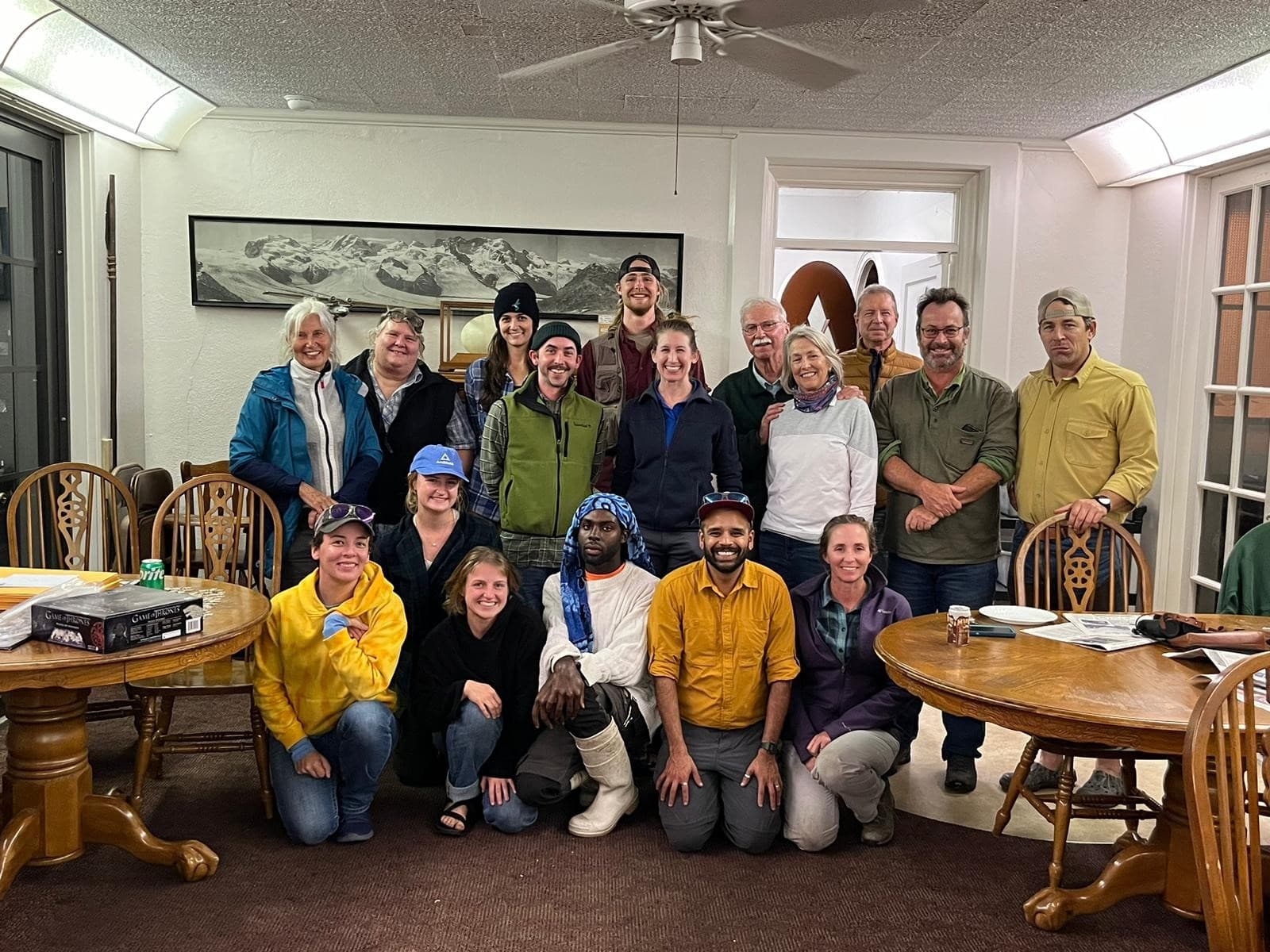 Photo by: Sarah Beres
Photo by: Sarah BeresConnecting Through Birds
Author: Sarah Beres
When you picture a birder, what do you think of? A couple in their 70’s wearing knee high socks, looking more and more like each other by the day? One has a camera with a comically large lens on it - the other has a CIA-approved pair of binoculars and a face showing their general discontent? Birding isn’t the most alluring nor approachable activity and, academically, Ornithology has a particularly exclusionary past. However, a new generation of birders is growing in number and beginning to change the model of who might be a birder.
Participation in birding events in recent years has skyrocketed. According to its website, Cornell’s Backyard Bird Count Day’s participation increased 40% just between 2020 and 2023. It is possibly due to citizen science apps like eBird or Merlin that bridge the birding community together and make it easier to identify species. This increase in popularity is all the more impressive when compared to humble beginnings of other annual birding events like the Christmas Bird Count.
The first Christmas Bird Count was introduced in 1900 by Frank Chapman who proposed a bird ‘count’ rather than a ‘hunt’. Previously, hunters and naturalists would participate in Christmas ‘Side Hunts’ in which they competed to acquire the largest bounty of birds and mammals. Chapman suggested the switch to counting rather than shooting in response to decreasing bird populations. The first count involved just 27 people across 25 cities. Since then, Christmas Bird Counts have grown in range and popularity, covering 2625 cities with the help of more than 79,000 participants.

Caption: 2023 Lake Placid Christmas Bird Count participants. Top row: Hilary Swain, Paige Martin, Tori Bakley, Zach Forsburg, Fin Ouweleen, Jen Miller, John Fitzpatrick, Molly Fitzpatrick, Ed Seed, Raoul Bouhgton, & Joe Guthrie. Bottom row: Megan Abram, Sarah Beres, Emily Anderson, Akiem Gough, Sahas Barve, & Betsey Boughton.
This growth is happening in Lake Placid as well. December 18th, 2023 marked Lake Placid’s 34th year participating in the Audubon Christmas Bird Count. For the second year, Archbold Biological Station, led by Avian Ecology Research Assistant Sarah Beres, organized and compiled the effort. Since 2022, participation in the event has increased by almost 50%, adding representation of varied birding experience and professional backgrounds. In my own team, Aaron David, Director of Plant Ecology at Archbold Biological Station, surprised me not only in his ability to point out a Yellow-Throated Warbler the rest of us had missed, but also in his eagerness to teach a bunch of bird-nerds about plants we would have otherwise ignored. While Archbold’s staff was well represented, almost half of the participants this year were a part of other Lake Placid institutions including chapters of the Audubon Society and US Fish and Wildlife Commission, and many more! In pairing individuals with varying expertise together, the day turned into so much more than counting birds - rather a celebration of the nature we all love so dearly. In the end, almost 300 miles were covered from sunset to dusk, revealing 129 species!
While interest and participation in birding events present a hopeful trend, we still have a ways to go before making hobbies like birding more approachable to people from different backgrounds. Birding benefits mental and physical health and, with increasing efforts, apps like eBird collect vital data on the current population declines of bird communities. While it might seem theatrical to say, birding, combined with new technology, has the ability to bridge us to both nature and each other.
While it’s quite a ways away, reach out to sberes@archbold-station.org if interested in Lake Placid’s 2024 Christmas Bird Count.